
Experience the Kia Cerato in caraoke form
Earlier this year, we teamed up with Kia to create a ‘caraoke’ experience in the new Kia Cerato. The idea was to give visitors the chance to jam along to Australian rock classic ‘Are You Gonna Be My Girl’ with their friends and, through the power of augmented reality, a famous tennis player.
While the goal of bringing people together to share a fun, lighthearted experience at the Australian Open was simple, the experience itself saw us integrate seven different technology systems into one seamless experience. Despite the fact that none of these technologies were new to us, the logistic challenge was an interesting one – and one that taught us a lot.
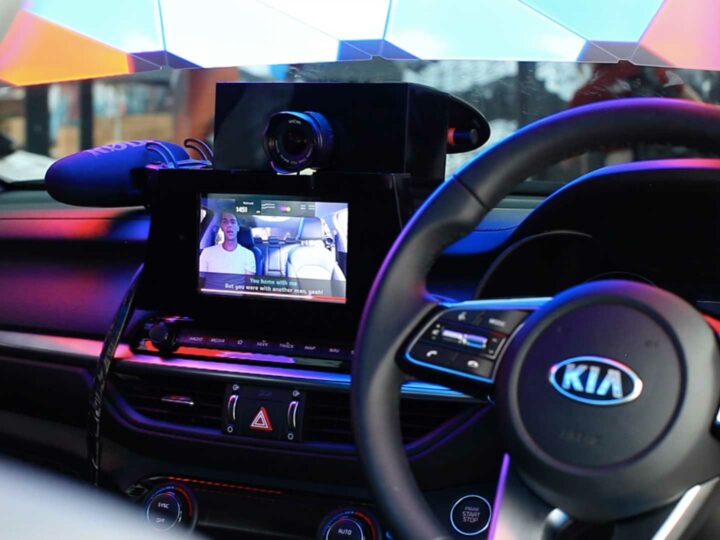
Kia Caraoke Studio
An interactive karaoke studio for tennis fans at the Australian Open.
To capture and share those learnings, we’ve interviewed some of the team. If you want to know a little more about the project first, take a look here. Otherwise, read on to find out what it took to make the project and how the team felt about the final product.
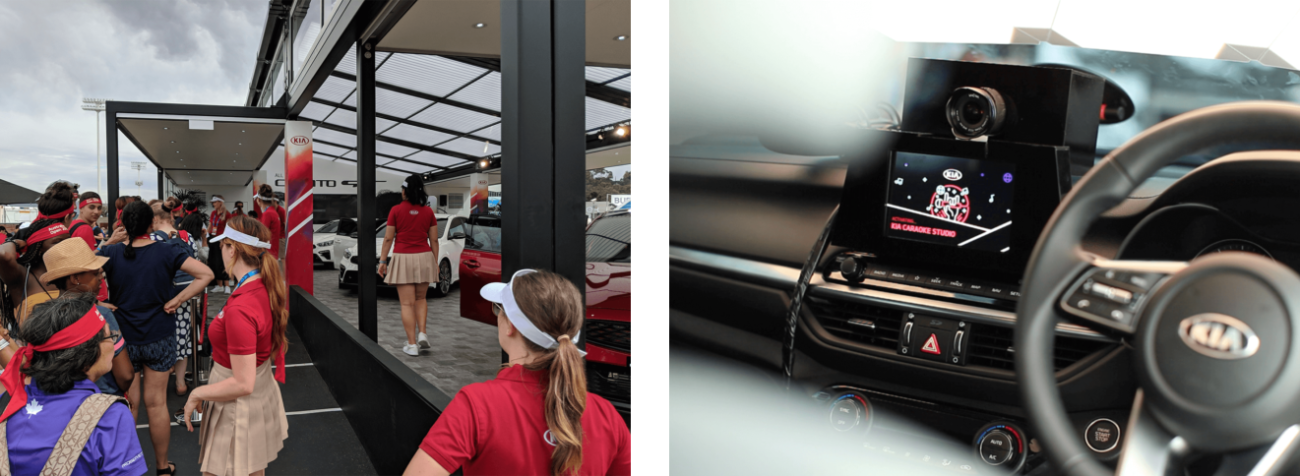
What was your role for this project?
Chris: Creative Lead. I guess the crux of this means taking a loose direction and fighting for an experience that was going to hit the brief to attract and entertain guests.
Natalie: Project Manager. I started working at S1T2 about halfway through this job, and my main jobs were to organise the video shoots, source equipment and bump in.
Liam: Tech Man. I was tasked with designing all the systems that came together to create this experience. Basically I was in charge of figuring out what individual programs we would need, how everything would communicate, and what physical systems would be needed.
Nicky: Design Direction. My role was to make sure the concept and designs were immersive and easy to understand, and to carry on those ideas into the execution of the videos.

What made the project exciting or unique for you?
Chris: With most brand gigs, there is a mandate to entertain while also educating or, more specifically, selling. Which means from a design perspective you are serving two masters – and usually one is left unsatisfied. What was great about this assignment was that we just needed to entertain the visitors. They were already inside the vehicle, so it was about generating a memorable experience in the vehicle. People are going to remember a positive feeling for much longer and with much more nuance than the being told that the seats are lined with European leather or the price of the car itself.
Natalie: I had previously been working with CG and post-production, so this project was exciting because it was so different to what I’m used to. In post-production, everything you’re dealing with is digital and at the end you deliver a digital file. For this project, there was a lot of digital tech involved, but also so many physical elements. Screens, camera, lights, computers, a tonne of cables. I’d gone from a life of delivering a single file to delivering a mass of integrated equipment.
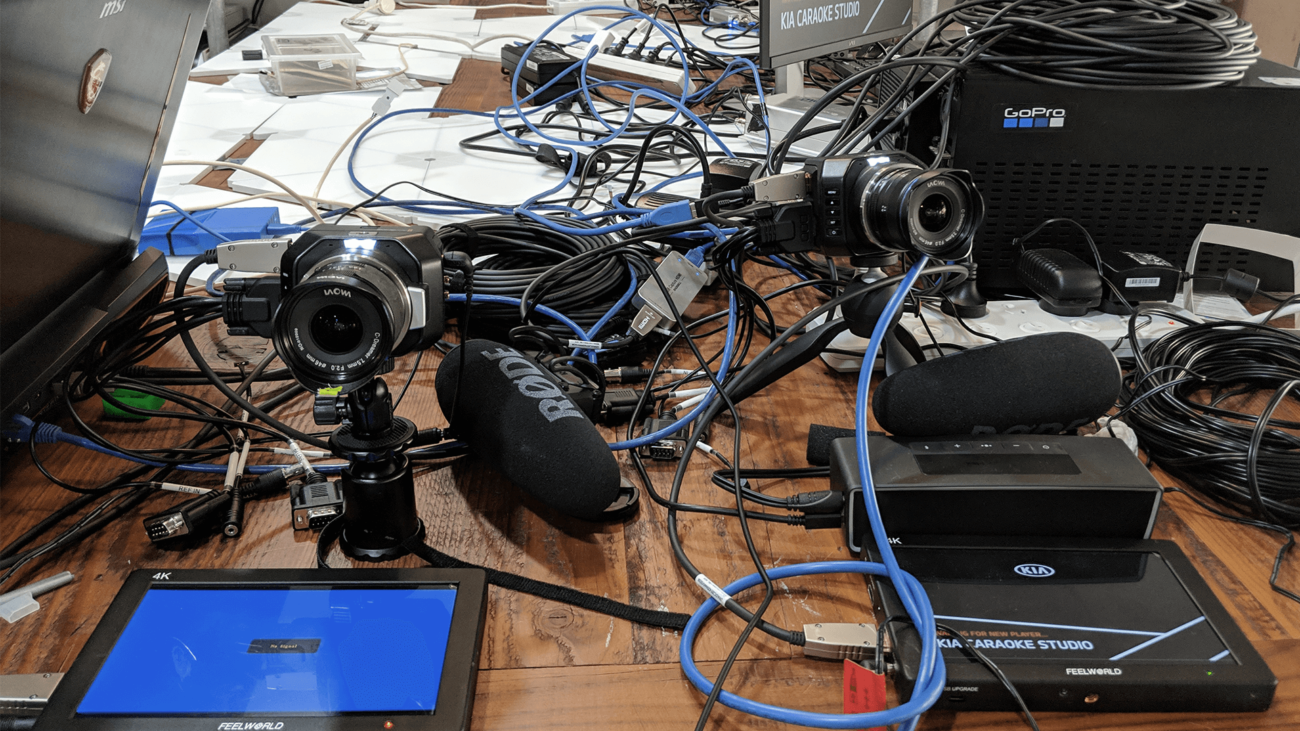
Liam: Although the project seemed small and succinct, there was actually quite a lot of different technical things going on in the background. I really enjoyed designing and helping integrate these systems into a seamless experience.
Nicky: I loved collaborating with people who have a wide range of skills, especially considering how complicated the system needed to be. What we ended up with was seamless and a great user experience.
What was the biggest challenge you faced?
Chris: Timeline. When there isn’t much time it puts a lot of pressure on getting things right the first time, and you know the production will need to facilitate cascading complexity. For example, the song choice. There’s obviously price, approval and how long negotiations take. But you also need to consider so many other things. How will the vocals of that song behave in a vehicle you have limited access to? What effect will a John Farnham song versus a Jet song have for our pitch scoring algorithm? Will the lyrics cause sync issues? All these things you can’t really test when there’s no timeline. When you’ve got a great team and backup plans for your back up plans you make it work, but when you know the result needs to be excellent a short timeline is not your friend.
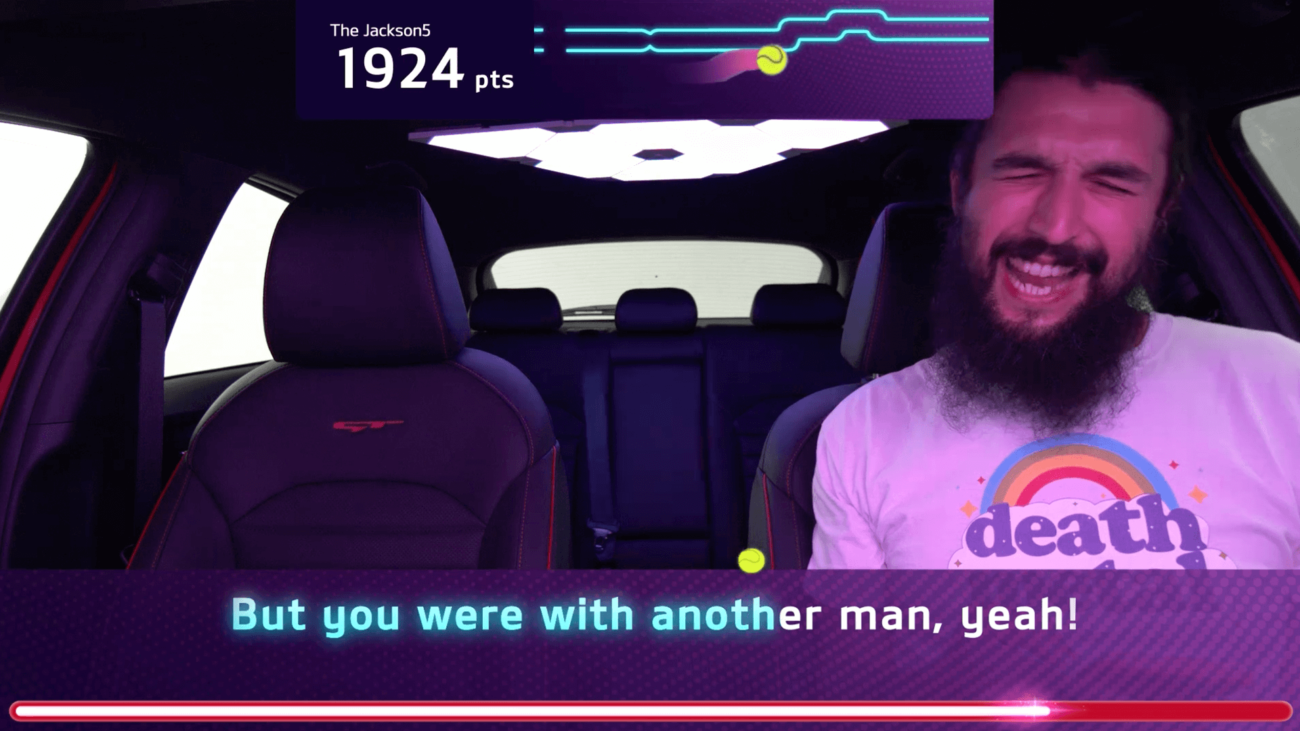
Natalie: Most of the challenges I encountered were the things I least expected. We wanted to attach lights to the inside of the car, so that being inside felt like being in a disco. The challenge was to do this without damaging a brand new car. Sure, I thought, I’ll just find some heavy duty adhesive or velcro. What I didn’t expect was how non-stick car ceilings are.
I bought and tested almost every sticky product I could find and none of them could sustain the weight. I was calling car headliner technicians, gaffers, all sorts of handy people to figure this out. No good solution. It was only when driving around with Chris that he had an idea and tried popping the ceiling light out. Turns out there’s screw holes under there, and we could custom build a structure that screwed into the ceiling from that point.
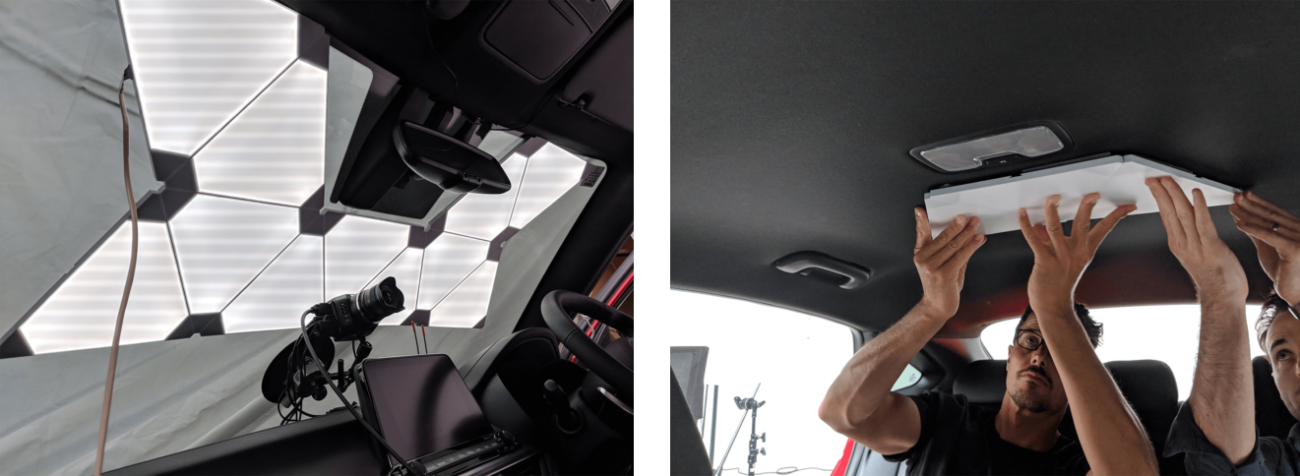
Liam: To create this experience we needed lots of different systems and equipment to talk with each other for 2 weeks straight in 40+ degree heat. We had tablets that users could register on and tablets that brand ambassadors could use start/stop the experience in multiple cars. Inside the experience, each car had a blackmagic camera, studio microphone, speakers, screen and LEDs that needed to be patched through to the server room. Then the car computers would also need to communicate with an online service to store the video, create a mini-page to watch/share the video, and send visitors a personalised email. Installing all of these systems, getting them to play nicely, be performant and last through the blazing heat was a challenge that was really exciting to see through to the end.
Nicky: Since there was a lot of collaboration with people working in and out of state, it was a bit difficult to match timing for progress meetings. And by the time we got the car for testing, it was only a week before the activation so we had to rush through the final touches.
What part of the project are you proudest of?
Chris: The ability for so many people to complete isolated tasks well and then come together as a team to integrate it all at once and create a holistic experience.
Natalie: I’m proud of the team’s effort in pre-production to get lighting and compositing right. It really helped make it feel real like the tennis star was right next to you.

Liam: So many different things could have gone wrong with this experience due to cable spaghetti, external components, heat and high user traffic. I’m really proud of how everyone from lots of different disciplines pulled together to create something that was technically stable, fun and entertaining.
Nicky: All the work we put into lighting pre-production resulted in a final product that worked really well. We were able to really closely match the lighting of the celebrity shoot with the live footage, and create really immersive results.
Were there any memorable moments?
Chris: Testing in the car park until 1am, singing the song over and over. And then doing it all again for hours during the production shoot itself.
Natalie: QA for this job involved singing and dancing to Jet’s “Are you going to be my girl?” over and over again. I sung in the office, in the loading dock until very late one night, for days bumping in before the Aus Open, during the Aus Open…
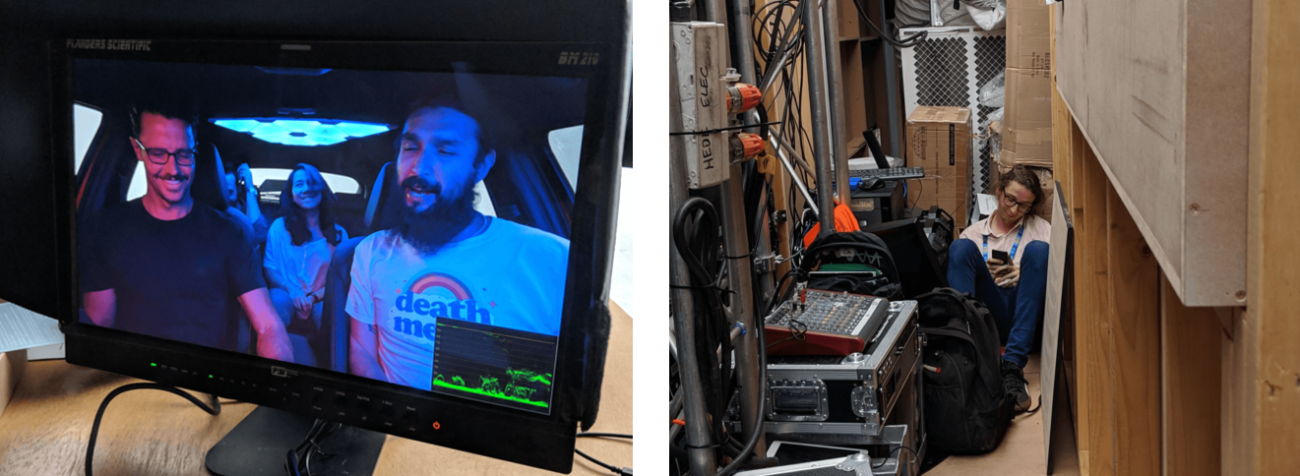
Liam: Watching Nat lose her marbles in 43 degree heat was pretty entertaining. We also had a great time installing all the equipment into the cars and making them look nice while listening to Jet on repeat for 2 weeks straight. And then there were the many naps (due to head stroke?) in the cramped server area.
Nicky: I built a shed of light in the office. It felt like owning another Australian property, and I ended up with a good collection of selfies with really cool lighting. And now I can make lighting setups interact with sound and environment (which will help as we set the scene in our office D’n’D room).
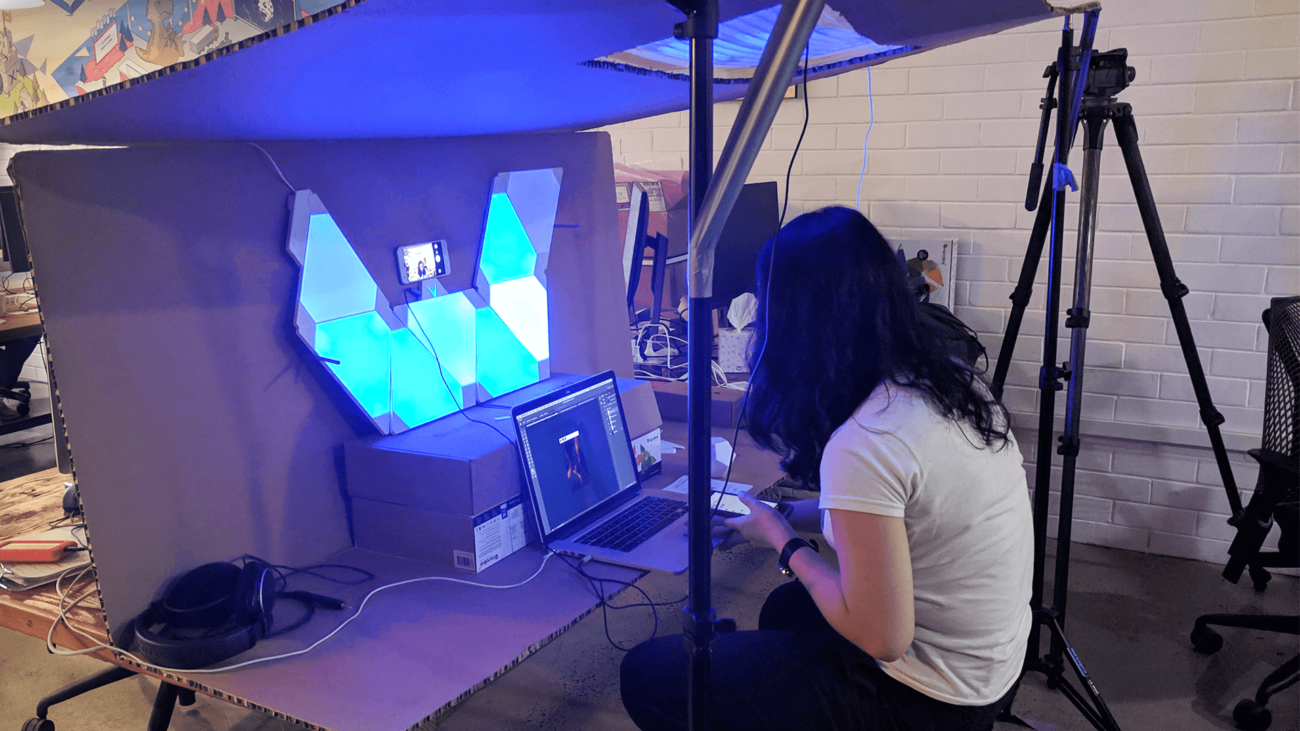
What are your biggest learnings or takeaways?
Chris: More collective WIP’s would have solved some issues but equally better public testing in the office. It’s also always hard to provide adequate testing for a system ‘anyone’ can use when you use your own teams to test it. Their affinity with the project or technology means you will miss things that the public will uncover. So I think we will be air tasking some additional testers next time round.
Natalie: This seems obvious in retrospect, but being really careful with the introduction of new equipment to an already complex setup. Even small additions to the tech setup on-site caused issues for us that were difficult to figure out.
Liam: Being tech lead inter-state and while travelling overseas meant that people didn’t have much technical direction until I was back in reality. More documentation and technical meetings would’ve helped make sure everyone was on the same page before I was uncontactable. I’d also try to cater for the inclusion of last minute requests to save in the long run.
Then, at the Open the activation broke in ways that we’d never tested for. Basically, the control app was being handled by people who had never used it before and so weren’t aware of the intricacies we were avoiding while testing. I think we would have benefited from testing the app on people without any technical context (i.e what we do with brand ambassadors) to find game-breaking bugs early on.
Nicky: Good pre-production and R&D means less post-production work. More WIP sessions would also help speed up everyone’s schedule and get the work done for each week’s sprint (which means less bottle necks for people’s workflow and better multitasking despite different time zones).








